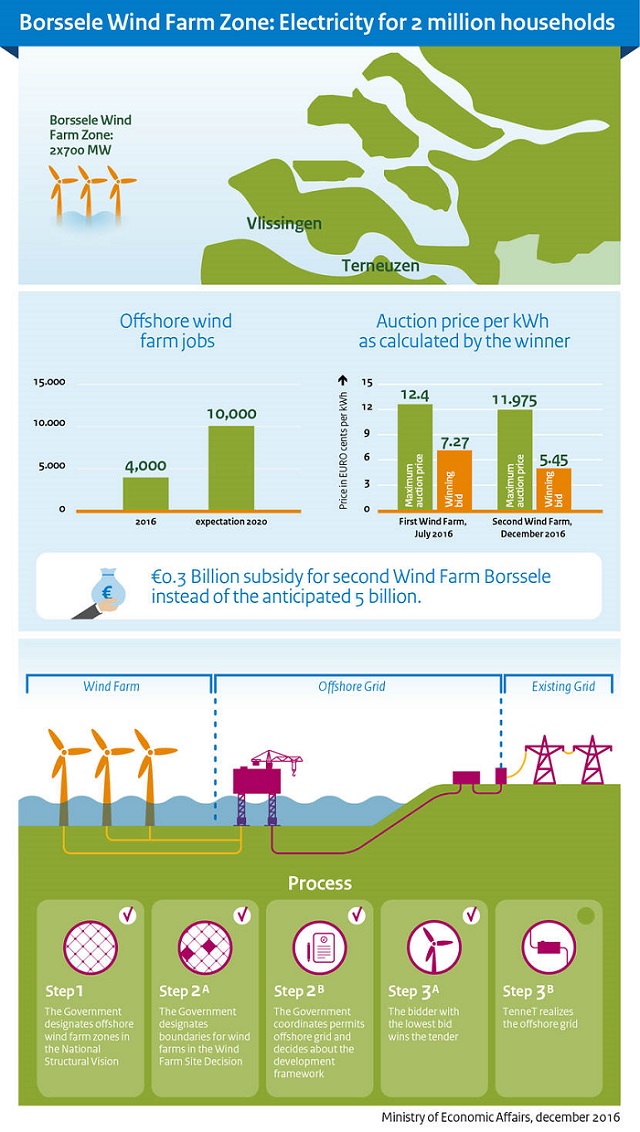Shell Consortium Wins Dutch Offshore Wind Contract
A consortium led by Royal Dutch Shell beat 26 other bids for a contract to build 700 megawatts of offshore wind capacity, the Dutch government said as it announced plans for a further seven wind farms to be built in the next decade.
Contractors Eneco, Van Oord and Mitsubishi/DGE are Shell's partners in the consortium to build in the Borssele III and IV wind areas, which promised the Netherlands' lowest-ever strike price of 54.50 euro cents per megawatt hours. The wind farms will be built at a distance of 22 kilometers (13 miles) off the coast.
Speaking to reporters in Rotterdam, economic affairs minister Henk Kamp said intense competition, low interest rates and high existing capacity had helped keep prices low - a state of affairs he expected continue.
"In the future, the North Sea could very well be crowded with wind turbine parks," he told reporters after announcing the plans for further deepwater wind farm developments.
“If the electricity price develops as we expect, in 7.5 years’ time subsidies will no longer be required for the production of electricity from offshore wind farms,” he said. “That brings the Government's aim for renewables to compete with fossil fuels without subsidy within reach. The Netherlands is a front runner in the development of offshore wind energy, creating many opportunities for the Dutch industry. With these winners this becomes even more clearly visible.”
Earlier this year, the Dutch government awarded a contract to build 700 megawatts of capacity in the Borssele I and II wind areas to Denmark's Dong Energy, offering a strike price of 72.70 euro cents.
While low, the price is not quite as keen as the 49.90 cents achieved by Denmark in a recent wind project, though that park was being constructed in technically less difficult shallower waters.

that matters most
Get the latest maritime news delivered to your inbox daily.
The low strike price means the government expects to pay subsidies of only 300 million euros ($319 million) for the development for seven and a half years, far less than the five billion it had planned for.

